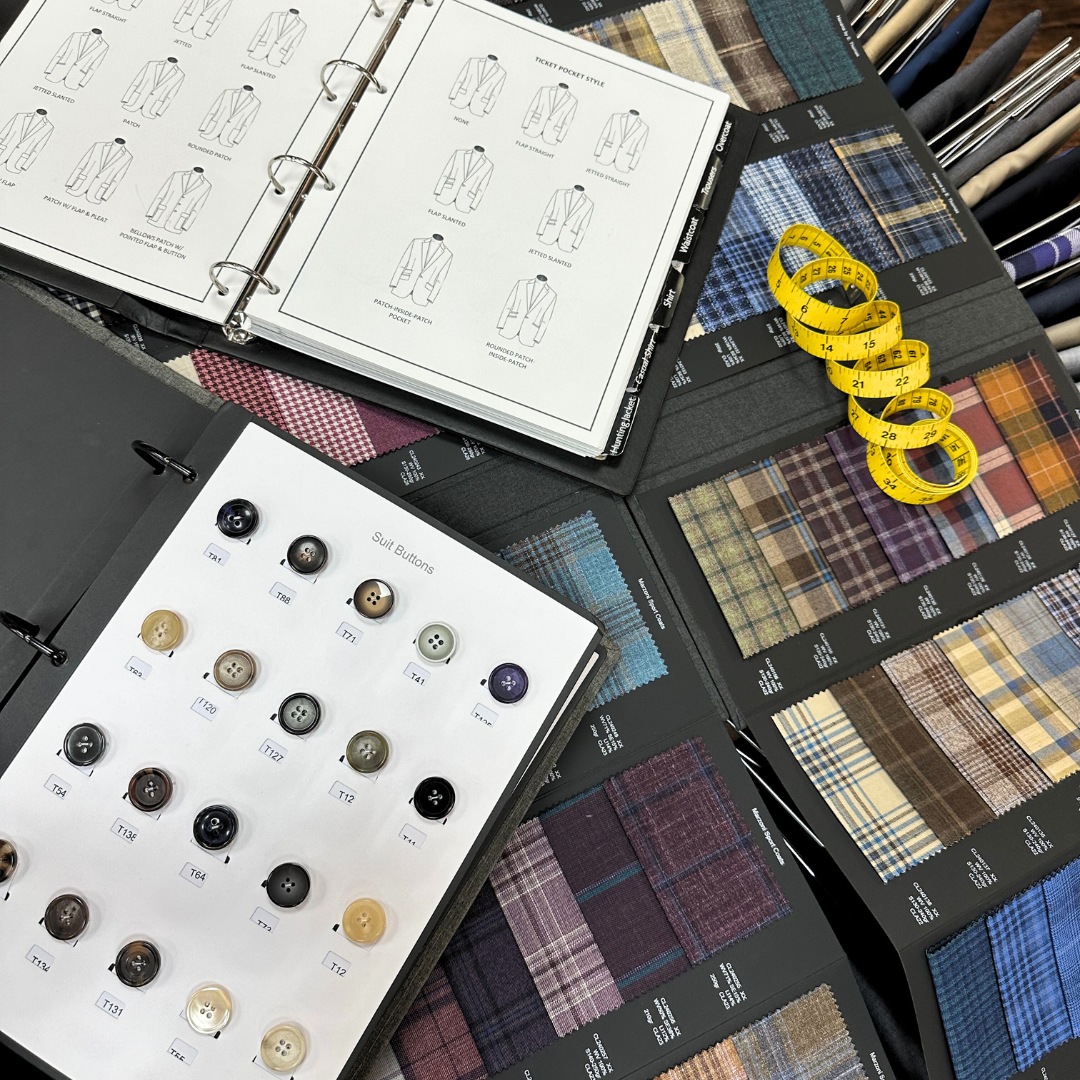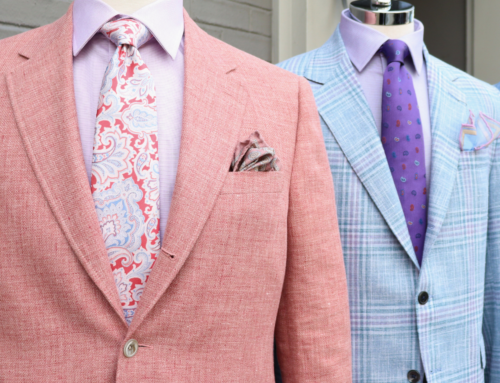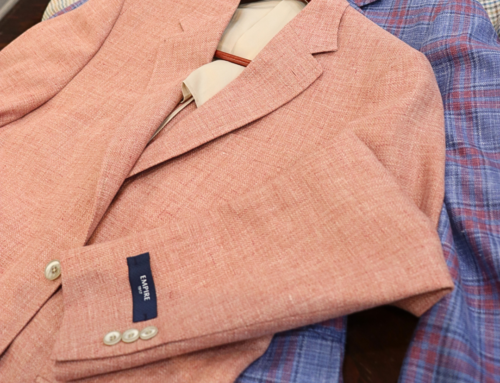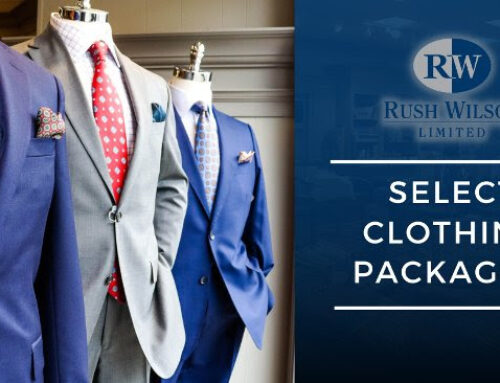While much of the fashion world is focused on women’s clothing, men’s clothing can be just as stylish and fashionable. If you’re looking for a polished look, you might be wondering, “How should men’s clothing fit?”
Whether you’re donning a suit for a formal event or choosing a more casual look, how your clothes fit can make or break your overall style. Achieving the perfect fit isn’t about conforming to a specific body type; it’s about understanding proportions and choosing clothing that complements your physique.
Here’s a general style guide on how men’s clothes should fit to help you look and feel your best.
Considerations for How Men’s Clothing Should Fit
Here are a few things to consider when striving for the perfect fit in men’s clothing:
- Find Brands That Work for You: Different brands use different sizing systems. Some brands might be better suited for slender frames, while others offer a looser fit. Find the brands that work well with your body to get a better fit from the start.
- Consider Alterations: While you might be able to find some off-the-rack clothes that fit well, it is worth investing in alterations to achieve the ideal look, especially for more formal attire.
- Focus on Comfort: Clothes that fit well should be comfortable. If you try something that pinches your waist or bunches up on your thighs, the sizing is not a good fit for you.
- Dress for Your Body: While you may want to continue wearing the same size pants you wore in college, trying to fit a fuller body into smaller clothes will make you look heavier than you are. Choosing appropriately sized clothing will make your body look its best.
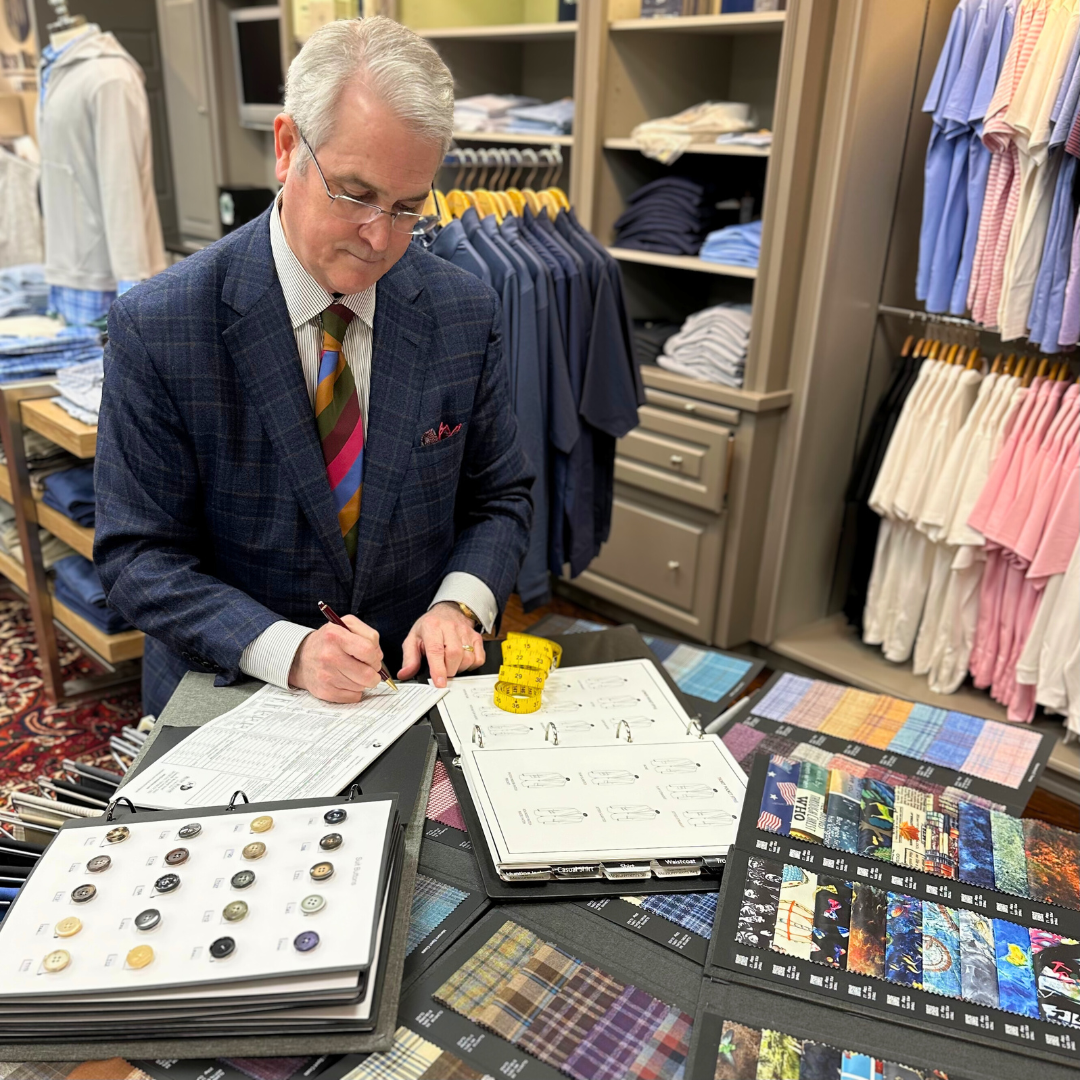
Fit Suggestions for Common Types of Men’s Clothing
Men’s clothing options tend to be straightforward. However, you can easily make a good impression by choosing clothing that fits your body the right way.
1. The Perfect Fit for Men’s Shirt
Men’s dress shirts should fit comfortably without being too tight or billowy. When trying on a shirt, pay attention to the following areas:
- Shoulders: The seams of a shirt should align with the edge of your shoulders. If they droop down or extend beyond your shoulders, the shirt is too large.
- Chest: The fabric should lightly graze your chest without pulling or stretching when you move.
- Sleeves: Aim for sleeves that end just above the base of your thumb when your arms are hanging naturally. They should have enough room for movement but not be excessively loose.
- Length: The hem should hit around mid-crotch level, ensuring it stays tucked without bunching up in your pants.
2. Choose Pants That Fit Just Right
Properly fitted trousers can elevate your entire look, offering both comfort and style. Here’s what to consider when fitting trousers:
- Waist: Trousers should sit comfortably at your natural waistline without being too tight or too loose. You should be able to slide two fingers comfortably between your waist and the waistband.
- Seat: The fabric across your rear should lie smoothly without any pulling or sagging.
- Length: Aim for a slight break where the trouser leg meets the shoe, with the back hem falling slightly longer than the front to create a clean drape.
- Thighs and Legs: The fabric should allow for easy movement without feeling constrictive or baggy. Ensure there’s enough room in the thigh area without excess fabric bunching up while sitting.
3. Make an Impression with a Well-Fitted Suit
A well-tailored suit is a timeless investment that exudes confidence and sophistication, whether that is in a business setting or attending a wedding or other formal event. When shopping for or tailoring a suit, focus on these key fit elements:
- Jacket: The shoulders should lie flat with no visible divots or wrinkles, and the lapels should lie flat against your chest without gaping. The jacket should hug your torso without pulling when buttoned.
- Sleeves: Jacket sleeves should end at the natural break of the wrist, allowing about a half-inch of shirt cuff to peek out. This creates a visually pleasing proportion.
- Trousers: Follow the same guidelines as standalone trousers, ensuring a proper fit around the waist, seat, thighs, and legs. The trouser length should be adjusted based on the style of the suit and your preference for a break.
4. Look Good Even When Going Casual
Even in casual attire, the fit remains essential for a polished appearance. Whether it’s jeans, chinos, or casual shirts, the principles of fit still apply:
- Jeans/Chinos: Choose a slim or straight fit that skims the legs without being too tight or too loose. The waistband should fit comfortably without requiring a belt to keep the pants in place.
- T-shirts/Polo Shirts: Look for a fit that follows the contours of your body without clinging excessively. The sleeves should hit the mid-bicep, and the hem should fall just below the belt line without extending too far past the hips.
Follow These Fit Guidelines to Always Look Your Best
Achieving the perfect fit is key to looking and feeling your best. Whether you’re opting for a finely tailored suit or prefer a relaxed look with jeans and a T-shirt, understanding how clothes should fit your body is essential.
By paying attention to key areas like the shoulders, chest, waist, and length, you can ensure that your clothes enhance your silhouette and exude confidence in any setting. Remember, it’s not about conforming to specific trends or body standards. It’s about finding what works best for your unique physique and personal style.
The next time you’re shopping for clothes or getting dressed for an occasion, keep these fit guidelines in mind to elevate your fashion game to new heights.


